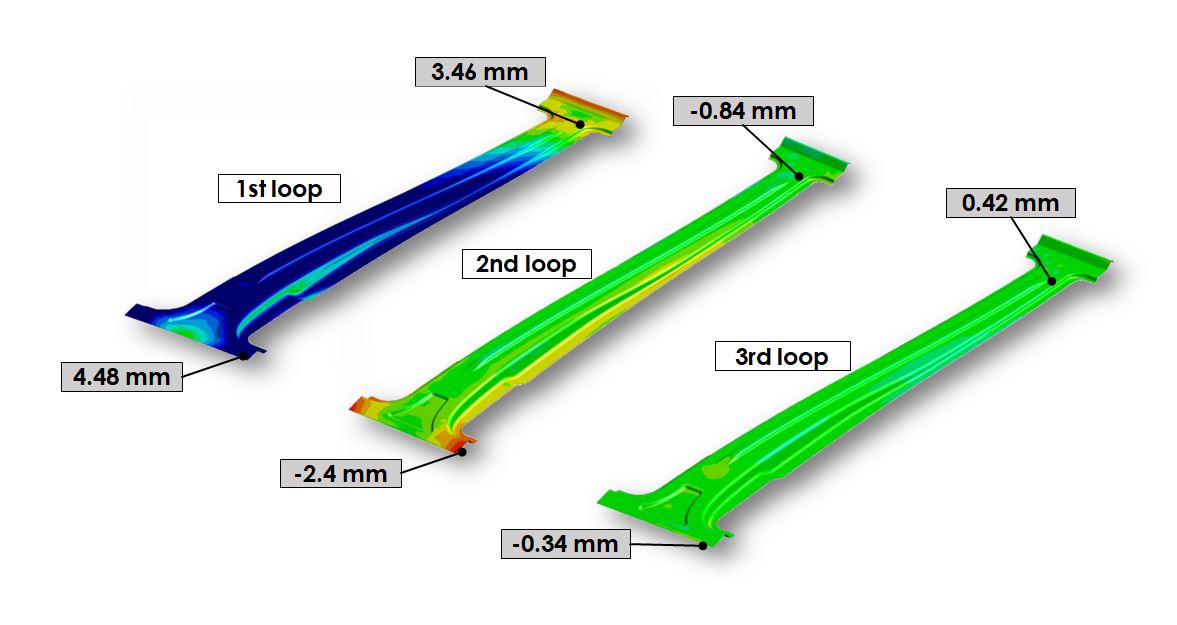Measure and Optimize Toolbox
Simulating the forming process is a great first step, but the most important information is measuring whether the resulting part is within tolerance, and adjusting the trimmming and forming tools as needed to create the exact desired part.
Compare to Nominal (including best fit)
Import a reference part into Stampack, and compare the forming results to this nominal part. Is the result in tolerance? Which areas need attention?
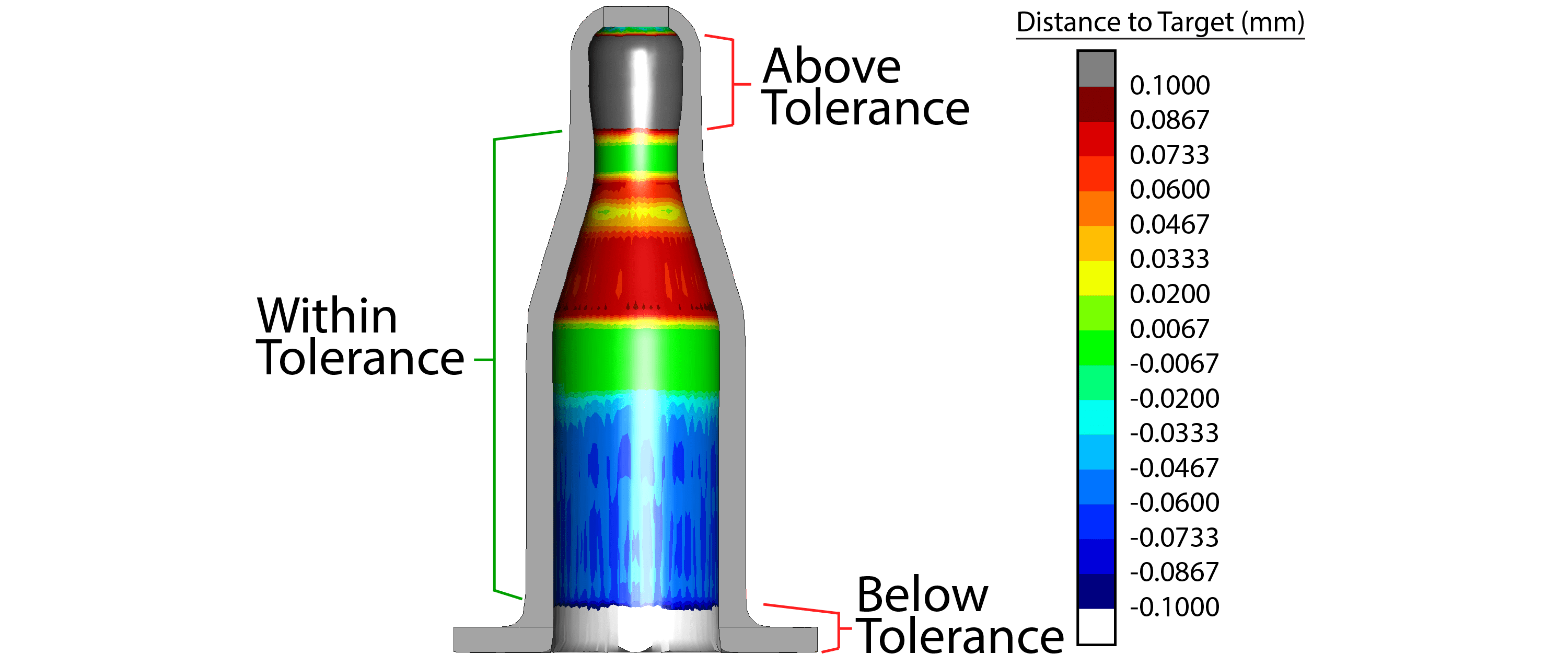
Trim Optimizer
Trim Optimizer is an automatic trimming line optimization module. It is an essential tool for the determination of optimum blank shapes and trimming lines. The trim line is rapidly determined to ensure that the desired shape and dimensions of the part boundary are obtained at the end of those operations which follow the trimming operation.
Trim Optimizer automatically adjusts the trim line to remove or add sheet metal until the desired part boundary is achieved. Optimum trim line-blank shape is necessary for the sheet metal forming process. The trim optimization not only prevents the wastage of material or reduces product development period but also improves product quality and reduces occurrence of defects like wrinkling and tearing.
Especially for multi-stage processes, the Trim Optimizer delivers significantly better results than the standard methods based on inverse one-step simulation.
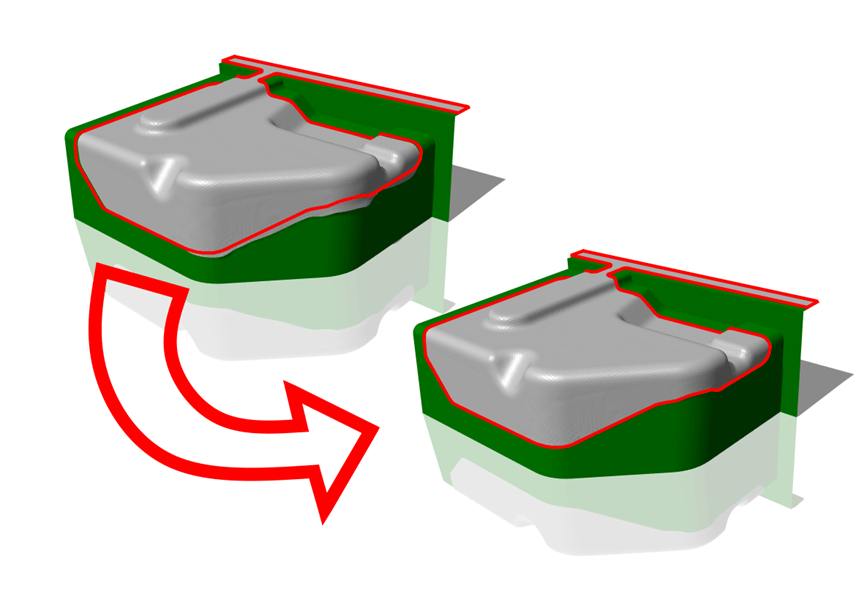
Springback Compensation
With the Springback module Stampack offers the possibility to simulate the springback of the workpiece after forming and to compensate the tool surfaces accordingly. Especially for complex, non-linear bendings, the springback calculation benefits from the high quality incremental forming simulation in Stampack and delivers much better results than a springback analysis based on the table book or on a standard Quick-And-Dirty simulation in an inverse one-step solver. Stampack calculates springback after both, shell and solid simulation. However, the high resolution of the forming process in the solid simulation leads to an even more accurate result. The included springback compensation measures the deviations against the desired nominal part and compensates the tool surfaces in the reverse direction based on an intelligent optimization algorithm.
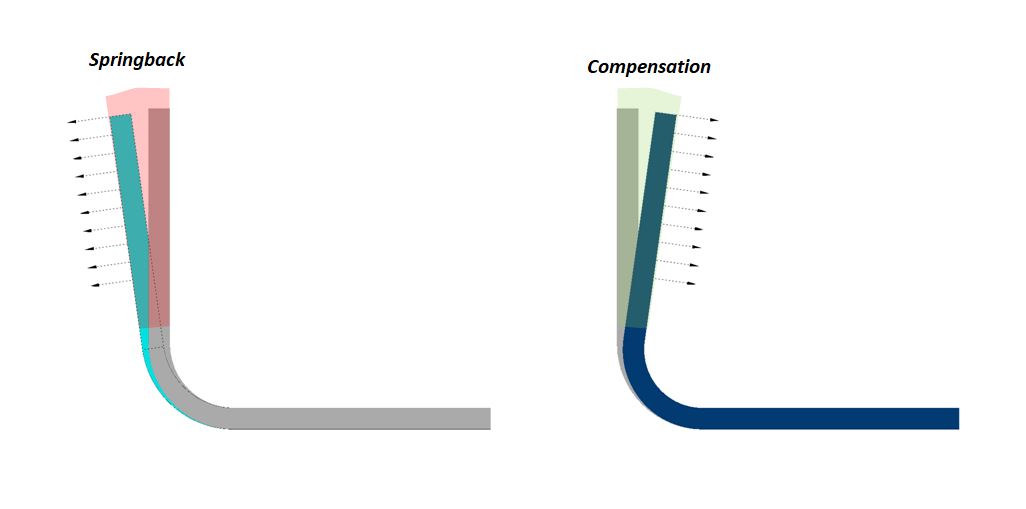
One of the highlights of Stampacks compensation algorithm is the automated detection and removal of undercuts. This is especially required to compensate the springback in parts that have vertical walls.
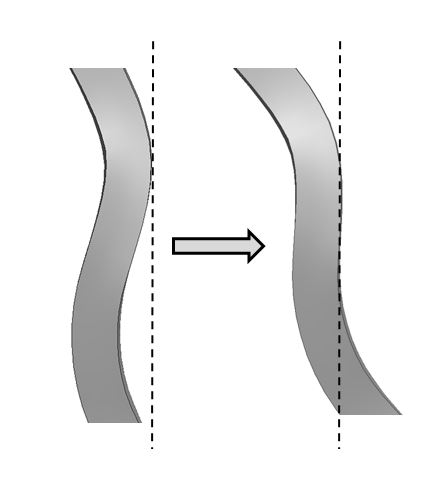
Typically, springback compensation is an iterative procedure. All the iterations are simulated in Stampack and the algorithm shows an excellent convergence behavior.
